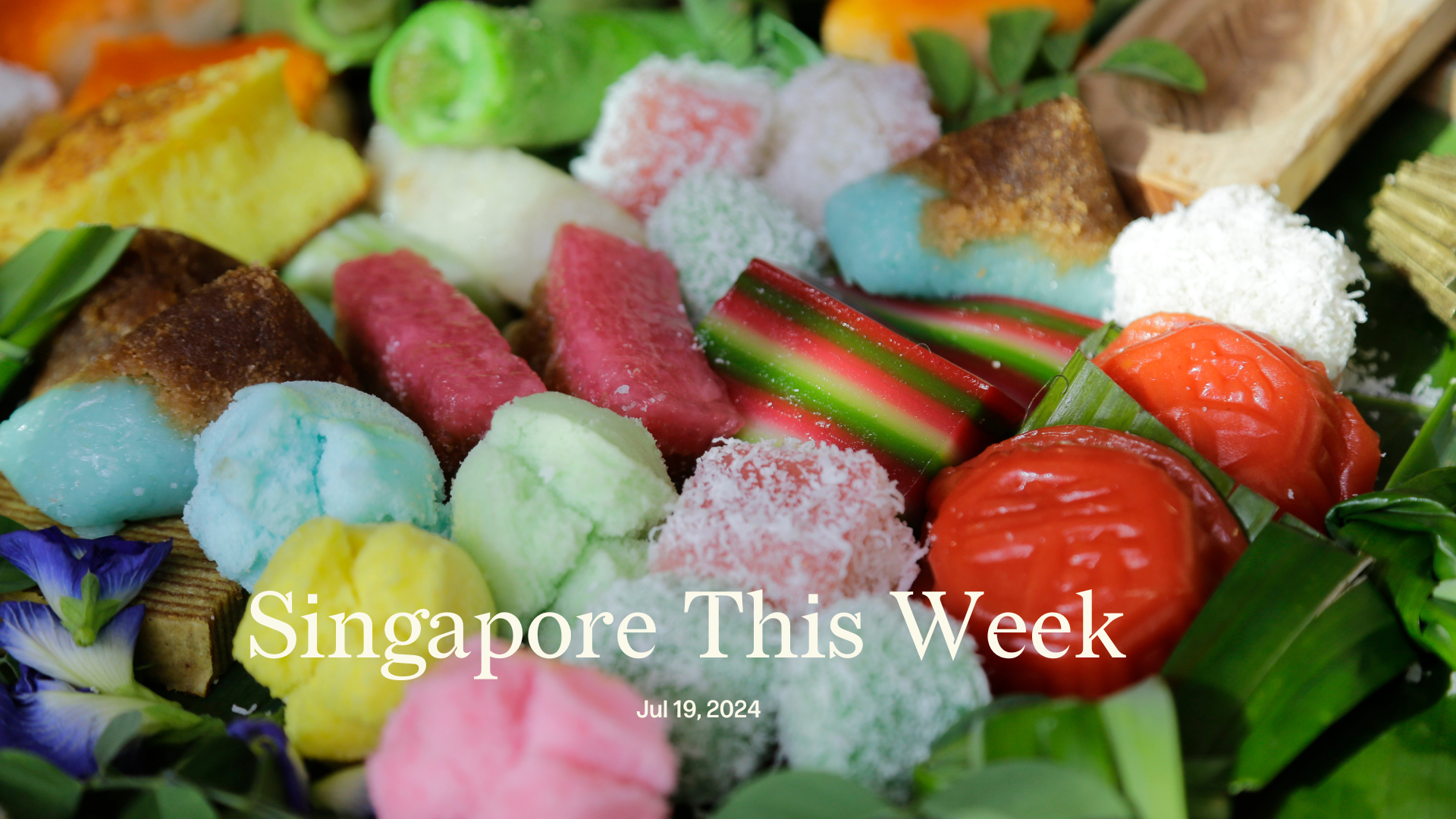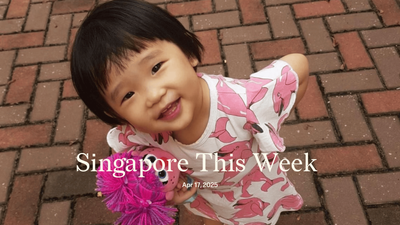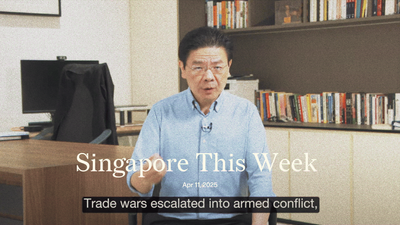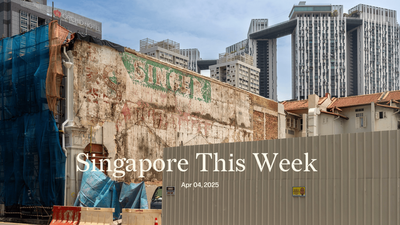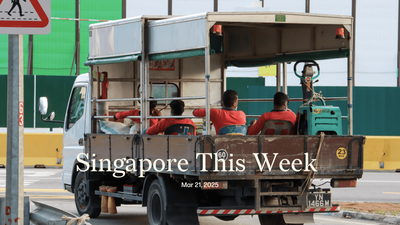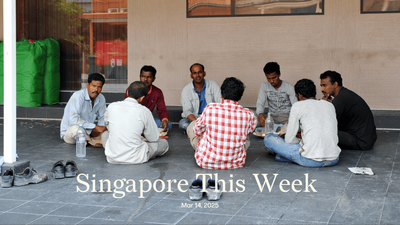Society: Let them eat kueh
A damning new wealth report by UBS has exposed the gross wealth inequalities that emerged in Singapore during the two-decade reign of Lee Hsien Loong, now senior minister. From the end of the global financial crisis in 2008 till 2023, Singapore’s average wealth rose an astonishing 116 percent, even as its median wealth—of the person in the middle—dropped two percent. “In markets where average wealth growth strongly exceeds median growth, like Singapore, it appears that most of the rise in wealth has benefited the upper income brackets,” said UBS.
Singapore is an outlier. Some other countries, such as Japan, Italy, and Spain, also saw average wealth growth outstripping median wealth growth, though the difference is small, compared with Singapore’s obscene gap. Meanwhile, in countries such as Germany and Switzerland, which have stronger social protections, greater political diversity, and much more democratically-engaged citizenries than Singapore, the inverse was true: median wealth growth was higher than average. “[T]he data suggest that adults in lower wealth brackets have seen their wealth increase faster than their fellow residents in higher wealth brackets,” said UBS.
Singapore’s wealth inequality over this period, as measured by UBS through its Gini coefficient, has risen faster than in any other country assessed, and is now, at 70, above the likes of Hong Kong and Indonesia. (UBS’s Gini is scored between 0 and 100, with 0 denoting perfect equality, and 100 denoting that one person owns everything.) As Jom has argued, Singapore not only uses a flawed measure of income inequality, which creates the illusion of greater equality, it doesn’t even bother measuring wealth inequality. Why does the great Smart Nation, which claims to prize data-driven policymaking, leave it to UBS to measure it for us? Well, maybe because the truth is embarrassing.
None of this should surprise us. As part of his effort to turn Singapore into a rich global city, Lee regularly emphasised the importance of attracting the rich. Singapore already has more millionaires than does London, a far bigger city, and UBS expects the number to rise 13 percent by 2028. In its individual Singapore spotlight report, UBS’s sober conclusion was that Singaporeans in higher wealth brackets have been “booming”, while everybody else has “essentially stagnated”. With senior politicians and civil servants almost certainly part of the “booming” class, perhaps the real genius of Lee is how he kept convincing the stagnating class to vote for his pro-rich party.
Some further reading: In “Lee Hsien Loong’s mixed legacy”, we analyse how the two-decade rule of Singapore’s third prime minister has led to a fabulously rich global city, but also a society that is more unequal and divided than ever before.
Society: Love thy servitude
One reason “booming” wealthy locals and foreigners must love living in Singapore rather than other rich democracies is the relative lack of public scrutiny. No pesky journalists, no prying eyes, no petulant paupers preying on one’s pockets. A new Pew study speaks to the self-censorship that continues to insulate the powerful. Just 55 percent of Singaporeans believe that people who disagree with government actions should be able to publicly criticise it. This is lower than any Asian country assessed, and well below the likes of East Asian democracies like South Korea and Taiwan (83 percent each). Conversely, some 41 percent of Singaporeans believe the government should be immune from public criticism. Put another way, when the Ridout Road saga broke last year, roughly two out of five people here would have preferred it if Jom had kept its mouth shut. (To be fair, they might have saved us from that POFMA.)
Similarly, only about a third of Singaporeans believe that people should be allowed to speak their opinions publicly, even if they upset others. The other two-thirds believe that harmony with others is more important than the right to speak one’s opinion. To be sure, the framing of the question is problematic: the contestation of upsetting ideas is not mutually exclusive with harmonious relations. Still, Singapore’s low score here is indicative of a docile disposition that hampers our performance in everything from classroom discussions to dynamic MNC workplaces. It’s also in keeping with our adoration of Xi Jinping and the modern Chinese state.
To understand the allure of the “Switzerland of the East” for global plutocrats, it is not enough to ponder governance, safety, the ease of doing business, and other metrics that make technocrats drool. Just as important are the social conditioning about hierarchy, the internalisation of a natural aristocracy, and the self-policing and self-coercion of a people who, as Aldous Huxley may have observed, just love our servitude.
Society: Money for nothing
A key tenet of the Singapore consensus is the emphasis on individual responsibility. With some notable exceptions in the provision of public education and healthcare, there is an attendant allergy to anything that smacks of welfare. This mindset explains the bureaucratic morass that needy Singaporeans often have to navigate before they can receive assistance.
But things are changing. The concept of unconditional cash transfers—money with no strings attached—has gained currency around the world in recent decades. And in Singapore we now have evidence of its potentially powerful social and economic impacts. From May 2022 to October 2023, as part of a randomised control trial on unconditional cash transfers—the first one here—75 low-income families received between S$300 and S$550 a month. Qualifying criteria included a per capita income of at most S$1,000 and household income of at most S$3,600 before CPF. They did not have to secure employment or meet any other conditions to get the money. The 18-month period was deliberate, as prevailing government programmes offered cash assistance only for three to six months, renewable after. The trial sought to discover, among other things, what happens when low-income families are provided with a prolonged financial cushion.
A lot of good, clearly. By the end, participants had far lower levels of psychological distress and much better job security than those in the control group. The programme was run by AWWA, a social service agency, with technical assistance by Tri-Sector Associates, a social impact firm. The first tranche of funding (S$750,000) came from Standard Chartered Bank. The second round of an equal amount was pledged by Temasek Trust, contingent on the programme achieving specific objectives, which it has.
Worries about individuals wasting money or being disincentivised from working were far outweighed by the lifting of the mental burden associated with financial stress, said Kevin Tan, Tri-Sector’s CEO, at the results event attended by Tharman Shanmugaratnam, president and AWWA patron, and spouse Jane Ittogi. Individuals are infused with a sense of autonomy and dignity when society trusts them to do what’s right, said Ng Kok Hoe of the Lee Kuan Yew School of Public Policy. This is exemplified by Irawati, a 37-year old mother of five (who goes by one name). Her husband’s delivery-rider income was unstable. She used the extra money to buy healthier food and textbooks for her kids, and to learn to ride a motorcycle, which enabled her to also work as a food delivery rider. “I was able to tell my kids, ‘Yes we can go out to eat; Yes mummy can buy you this’, and that gave me the motivation to work and be successful, and to go out and help others.”
Society: No noose is good news
Mohamed Mubin Abdul Rahman, sentenced to death by the High Court in 2020 for heroin trafficking, has been acquitted by the Court of Appeal. Two months ago, the nation’s highest judicial body had overturned Mubin’s conviction, and asked the prosecution and the defence for submissions on whether an acquittal or a retrial should follow. This week, the prosecution recommended acquittal.
This brings to an end a nearly nine-year-old case involving Mubin, his brother Lokman Abdul Rahman, and two Malaysian drug suppliers–Mohd Zaini Zainutdin and Mohd Noor Ismail. The Central Narcotics Bureau had caught Lokman with the heroin on September 8th 2015. Lokman claimed to be a mere courier acting under instructions from Mubin, the supposed trafficker. The latter denied having any knowledge of the heroin, saying he had only received methamphetamine from Zaini and Noor, for personal consumption. A tangle of contradictory testimonies, allegations and counter-allegations ensued, but ultimately everything hinged on the provenance of the heroin, which in turn was linked to when the heroin was delivered.
As the case progressed, the prosecution changed its case on the purported date of delivery—from September 5th at the time of closing its case, to September 7th when cross-examining Lokman, to “sometime in the first week of September” when cross-examining Mubin before eventually claiming that the date of delivery was irrelevant. The three judges of the Court of Appeal found that there was a reasonable doubt as to whether the heroin was delivered on September 1st, 5th or 7th. They also called the prosecution’s change of case on the purported date of delivery of the drugs to be “such a fundamental change...as to be impermissible.”
As the justices noted back in May, fairness in criminal proceedings like these is especially important given the grim consequences for the accused if found guilty. By shifting its case on the delivery date, the prosecution made this part of the case “a moving target”, which was unfair to Mubin and his defence. Quoting from precedent, the court also observed that a “disparity of resources” usually exists between the prosecution and the accused, and that the former has significant lead time, “the length of which is largely within its control” before it brings charges. It is thus reasonable to expect the prosecution to have gathered all the necessary evidence to make its case once the trial begins.
Mubin was thus acquitted of the heroin trafficking charge. He subsequently pleaded guilty to two amended charges for possession of methamphetamine and was sentenced to timed served (he had spent more than eight years and nine months in custody). The court then ordered his release.
That the death penalty even exists on our statute books is anathema to all of us who oppose it (read Jom’s coverage here, here, and here). But it is heartening to see the highest court in the land demand such rigour before it is exercised.
Society: Alternative care approaches towards a more inclusive society for the neurodiverse
Adulting can be daunting for any young person—finding a job, moving out of home, building a life—but for people with autism, and their parents, there are the added challenges of independent living. “Sigh, the ‘post-18 cliff effect’ is one of the biggest fears for most parents [of children with special needs]. If Jun Le can’t continue with school or work after graduating from the special needs school, I hope he can find something he loves to do and make every day meaningful.” said Bob Lee, whose son, 17-year-old Jun Le, has autism. “As for work, if he can find a suitable job, I hope he can realise his potential and find happiness in a supportive and understanding environment.”
As an adolescent with autism reaches adulthood, the structures and institutions providing support stop doing so, leaving many of them without the services they’ve depended on throughout childhood. Some will end up staying home, requiring the family to find round-the-clock care, while others may move into one of 11 MSF-funded adult disability homes for long-term residential care. But institutionalisation has become an increasingly undesirable option—some parents believe that it will lower their children’s quality of life.
Securing a future for children with special needs that enables them to live a life with dignity is a quandary shared by caregivers; especially as they won’t be able to ensure that their children continue to get the best possible care after they die. “Many parts of the world, like Canada, are no longer on an institution model,” Dr Eunice Tan, head of special education at the Singapore University of Social Sciences’ S R Nathan School of Human Development, told The Straits Times. “It is about inclusion and being part of the community by participating in activities, regardless of how challenged a person is.” As autism care evolves towards a greater emphasis on empathy and inclusion, there’s an urgent need for a radical shift in current care approaches, ensuring access, affordability and integration. Alternative ways include: community-based living; personal-centred planning; sensory-friendly environments; behavioural and communication support; and education and training. In Northern Taiwan, a group of parents took matters into their own hands, coming together to create a communal living solution that’s located in a social housing unit.
A truly inclusive society must ensure that everyone, including people who are neurodiverse, can thrive and lead fulfilling lives, through work and social connections. “When parents are no longer around, they need a comprehensive support system,” Lee told Jom. “The government can help by making relevant laws and policies, providing financial support, and welfare benefits. The community can offer job training, even for simple jobs, social support, and housing options.”
History weekly by Faris Joraimi
A teaser video for Penang’s annual George Town Festival received backlash last week, for allegedly depicting only Chinese and Indian culture, while excluding Malays. By the time I tried to watch it, the video was already taken off YouTube and the festival’s publicity pages. Ahmad Murad Merican, a prominent historian and a Penangite, accused the video of “erasing the Malay-Muslim memory” of the island, and blamed Malay NGOs there for enabling this “memorycide and ethnocide”. Leaders of the Penang Malays’ Organisation and the Coalition of Penang State Malay Arts and Culture Associations also said the video seemed to erase Malays from existence in the state. Of course, politicians joined this drama, with Malaysian Islamic Party (PAS) and United Malays National Organisation (UMNO) officials criticising the festival organisers for not accurately showcasing the UNESCO-World Heritage city’s diversity. This response isn’t surprising. Penang is the only state in peninsular Malaysia where the Chinese, not the Malays, are the majority. (Though the difference is slim compared to Singapore: Penang is 41.3 percent Chinese while Malays make up 40.7 percent.) This composition nevertheless challenges the narrative of a Malay Malaysia, and is a source of pride or anxiety, depending on who you ask. Electorally, Penang is a stronghold of the Democratic Action Party (DAP), whose voter base is predominantly Chinese.
So there is context for resentment towards any perceived lack of Malay representation in how Penang is visualised to the world. I sympathise with this, as a Malay from Singapore. Like our city, George Town (Penang’s capital city and principal port) also has a cosmopolitan Malay past which is often overlooked, in favour of a colonial origin that supposedly made multiculturalism possible. Francis Light is their Stamford Raffles. He sought permission from Abdullah Mukarram Shah, the sultan of Kedah, to acquire Penang in 1786, in return for British military protection. Light reneged on his promise, and quashed Abdullah’s attempt to expel the British from Penang in 1791. However, important counter-narratives don’t have to come with ugly nativism: Muhammad Sanusi, Kedah chief minister, recently claimed that Penang “belongs to” his state; while both public intellectuals and ordinary citizens worry about it being overrun by the Chinese. The George Town Festival’s organisers apologised for their oversight, and highlighted how they’ve programmed Malay events every year. Heaven forbid a Singaporean tell Penangites what to say or feel, but calling this “ethnocide”? With world affairs today? Tolong lah.
Arts: No banner day for public art
It looks like the champion grumbler has a new target: complaining about public art. The Singapore Art Museum (SAM) replaced two banners in Tanjong Pagar after complaints from members of the public and the People’s Association. “Choose one apartment window above to look at. Keep staring until the inhabitant catches you staring,” read one; “Cover your ears while crossing the road,” the other. The first might promote “inappropriate social behaviours”, the other, “safety concerns in a senior-centric zone”, The Straits Times reported. This series of rotating banners is part of “A Daily Act”, a project commissioned under The Everyday Museum, SAM’s public art initiative.
This line of instructional participatory artwork can be traced to the Futurist and Dadaist movements of the early 20th century, where artists were keen to create collaborative work that might provoke an unexpected range of responses from spectators. Yoko Ono’s work from the 1960s features some of the most recognisable introductions to instructional public art: “Draw a map to get lost” or “Imagine one thousand suns in the sky at the same time. Let them shine for one hour. Then, let them gradually melt into the sky. Make one tunafish sandwich and eat”. The New York Times connects the lyrical austerity of Ono’s artwork and the austerity of her childhood in postwar Japan, where the artist and her brother, “displaced and hungry in the Japanese countryside, would look up at the sky and imagine menus filled with delicious meals that they could not eat”. The same bittersweet whimsy, perhaps, can’t be said of SAM’s banners.
This isn’t the first time that state-affiliated bodies have been critiqued for their off-kilter takes on artforms and methods. Consider Drama Box’s critically-acclaimed interactive work, “The Lesson”, which invited the public to consider land use in Singapore by collectively deciding what landmarks to save in a fictional public housing estate. The National Youth Council, in a plot twist, got people to vote on which families would get an HDB flat, and which might get the boot. These families included: a single mum with kids, a lesbian couple who wanted to adopt a child, and a childless couple. Kok Heng Leun, Drama Box’s former artistic director, worried about it perpetuating prejudices. He told ST: “It’s a matter of how you approach engagement. It’s easy to see something and be excited and jump on board. When you jump on board without actually understanding it, you do more harm than good.”
Arts: A shiny new Singapore Literature Prize shortlist
New authors and a more expanded list of genres are getting their time in the literary limelight with this year’s Singapore Literature Prize shortlist. Graphic novels and translation are now eligible categories in one of the country’s most prestigious awards, which started in 1992 with only a fiction prize. This year’s roundup features 71 works across the four official languages, with a S$3,000 cash prize for the winners in each of the 16 categories. The new “best debut” category also means a higher chance of winning for this slate of nominees. First-timers who got a nod in two categories include: Myle Yan Tay’s experimental novel catskull, a teen coming-of-age thriller told in episodic form, and Prasanthi Ram’s short story cycle Nine Yard Sarees, reflecting on the Tamil immigrant experience. Jee Leong Koh, poet and activist, also had two titles in the poetry and creative nonfiction shortlists: his poetry collection Inspector Inspector, which confronts paternal legacies across the personal and political; and Sample and Loop: A Simple History of Singaporeans in America, an ambitious biographical poetry cycle that explores the migratory stories of Singaporeans in musical verse, from the paediatrician to the porn star.
The judges also lavished praise on the varied crop of comic books and graphic novels they’d selected: the “absolute mayhem” of Kenfoo’s self-published COCKMAN, where an outer-dimensional chicken is transfigured into half-cock, half-man form on earth; alongside the “intimate and heartbreaking” Bearing Witness, where writer Vinita Ramani and illustrator Griselda Gabriele tackle postpartum depression head-on. Lucrative prizes can propel literary hopefuls from uncertain financial waters to substantially firmer ground. TODAY recently reported that the standard royalty rate for a book with a 1,000-copy print run is about S$950. Nominee Myle Yan Tay told TODAY: “If I think about the hours I [put]get into this versus the monetary returns, I’m going to go insane.” Let’s hope sanity prevails when the Singapore Literature Prize winners are announced on September 10th.
Some further reading: In “A family portrait in motion: Prasanthi Ram’s Nine Yard Sarees”, Jom’s review explores the complexities, confusions and conflicts central to the Tamil Brahmin diasporic experience in Singapore. And in “Postcard from Iceland: memento mori”, fellow nominee Myle Yan Tay makes a poetic and political connection between two seemingly disparate sites: Iceland and Singapore.
Business: Watchdog barks at Grab
Good news. That shocking peak-hour cab fare may not ascend to eye-popping levels. The Competition and Consumer Commission of Singapore (CCCS) has issued a provisional decision expressing concerns that Grab’s potential acquisition of Trans-cab, announced a year ago, could significantly reduce competition in the ride-hailing sector.
The CCCS emphasised that Trans-cab’s unique non-affiliated arrangement provides drivers with the flexibility to work across various ride-hailing platforms. This autonomy may diminish if Trans-cab integrates with Grab, meaning that Trans-cab drivers would be less likely to make themselves available on other ride-hailing platforms. Yee Wee Tang, Grab’s managing director, claimed the firm wants to facilitate Trans-cab’s digital transformation and improve driver welfare “amid shifting consumer behaviours”, to ensure there are enough good drivers to meet demand. Grab already has an exclusive arrangement with SMRT’s driver fleet (while competitor Gojek has partnered with ComfortDelGro). Yee also highlighted the role of technology in bolstering driver earnings and passenger affordability. Grab’s 2024 ESG report noted that driver-partners saw earnings per transit hour grow 9 percent year on year. However, passenger fares have risen quite substantially, if anecdotal evidence is anything to go by.
Anyone who remembers the spike in ride hailing prices following Grab’s 2018 merger with Uber will be relieved the CCCS is baring its teeth this time. Grab and Trans-cab have 10 working days to respond to the commission’s concerns.
Food: Mee Serangga?
From worms to cockroaches, Singaporeans have seen their fair share of unwanted creepy-crawlies in food. Yet, (safe) insects might soon be a staple of our culinary landscape. On July 8th, the Singapore Food Agency (SFA) approved the consumption of 16 insect species, including crickets and silkworms. The decision is in keeping with a wider push for bug consumption, with the United Nations’ Food and Agriculture Organization (FAO) advocating for insects as a sustainable and nutritious food source. Studies have found cricket protein powder is 50 percent more digestible than whey protein and contains around 60 grams of protein per 100 grams. In contrast, milk contains only around three percent protein. What’s more, crickets use 93 percent less water and require 90 percent less land than livestock to produce the same amount of protein.
Industry players are lining up. Asia Insect Farm Solutions and Future Protein Solutions are preparing new insect-based concepts and cricket protein products. Meanwhile, local producer Altimate Nutrition, collaborating with House of Seafood, is set to introduce various insect-based recipes. Altimate already has over 50 pre-orders for its flavoured cricket protein bars. Even though Singapore has cleared the first regulatory hurdle for them, companies must now go through the licensing process. The bigger challenge though will be convincing consumers to overcome deep-rooted distaste. Expect widespread education and awareness campaigns aiming to normalise insect consumption. It may take a while yet, but the culinary landscape is in for a crunchy transformation, hopefully one which nurtures innovative and sustainable food companies.
If you enjoy Jom’s work, do get a paid subscription today to support independent journalism in Singapore.
Amendment: we removed a line comparing income and wealth growth in our first blurb shortly after we first published.

